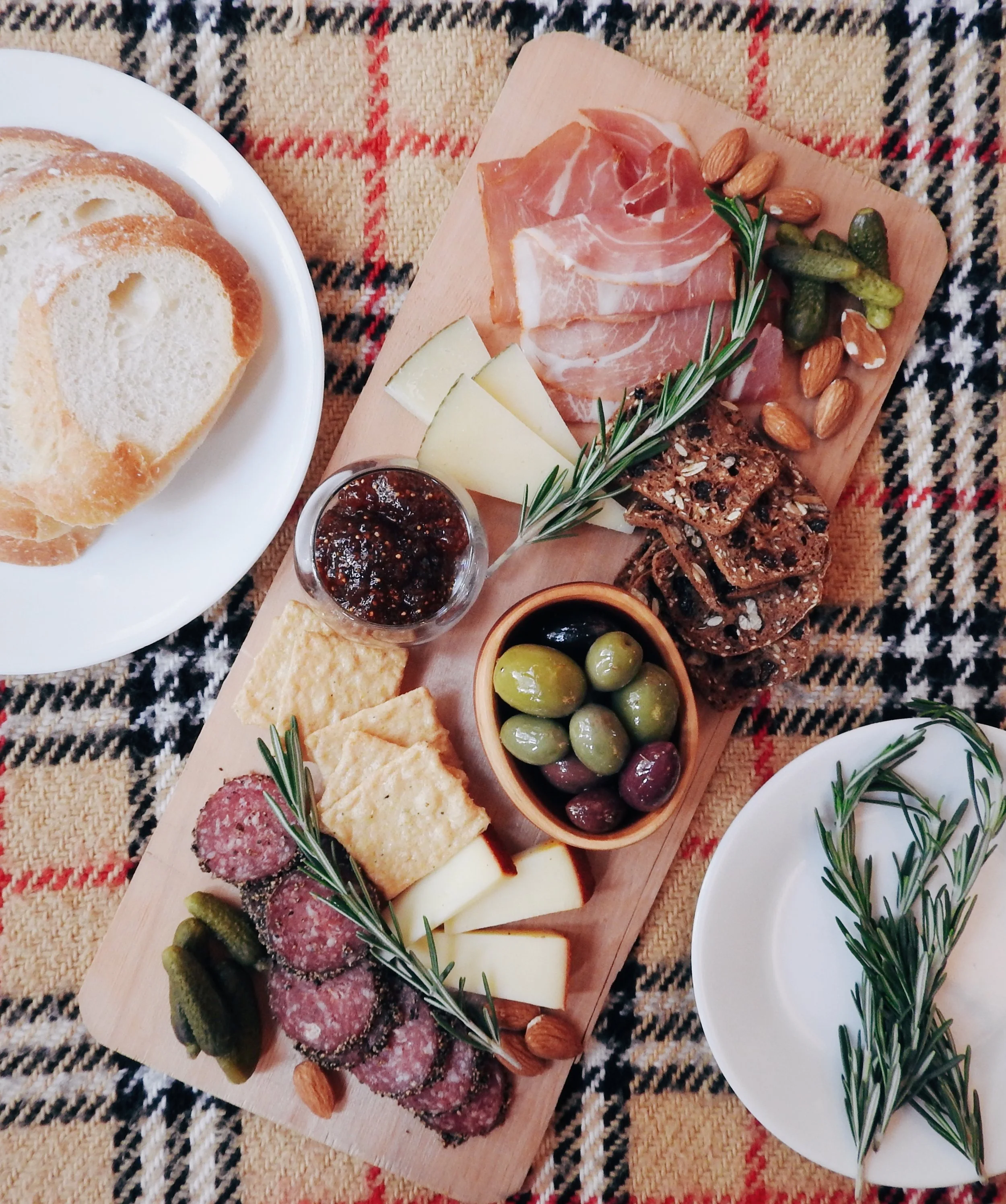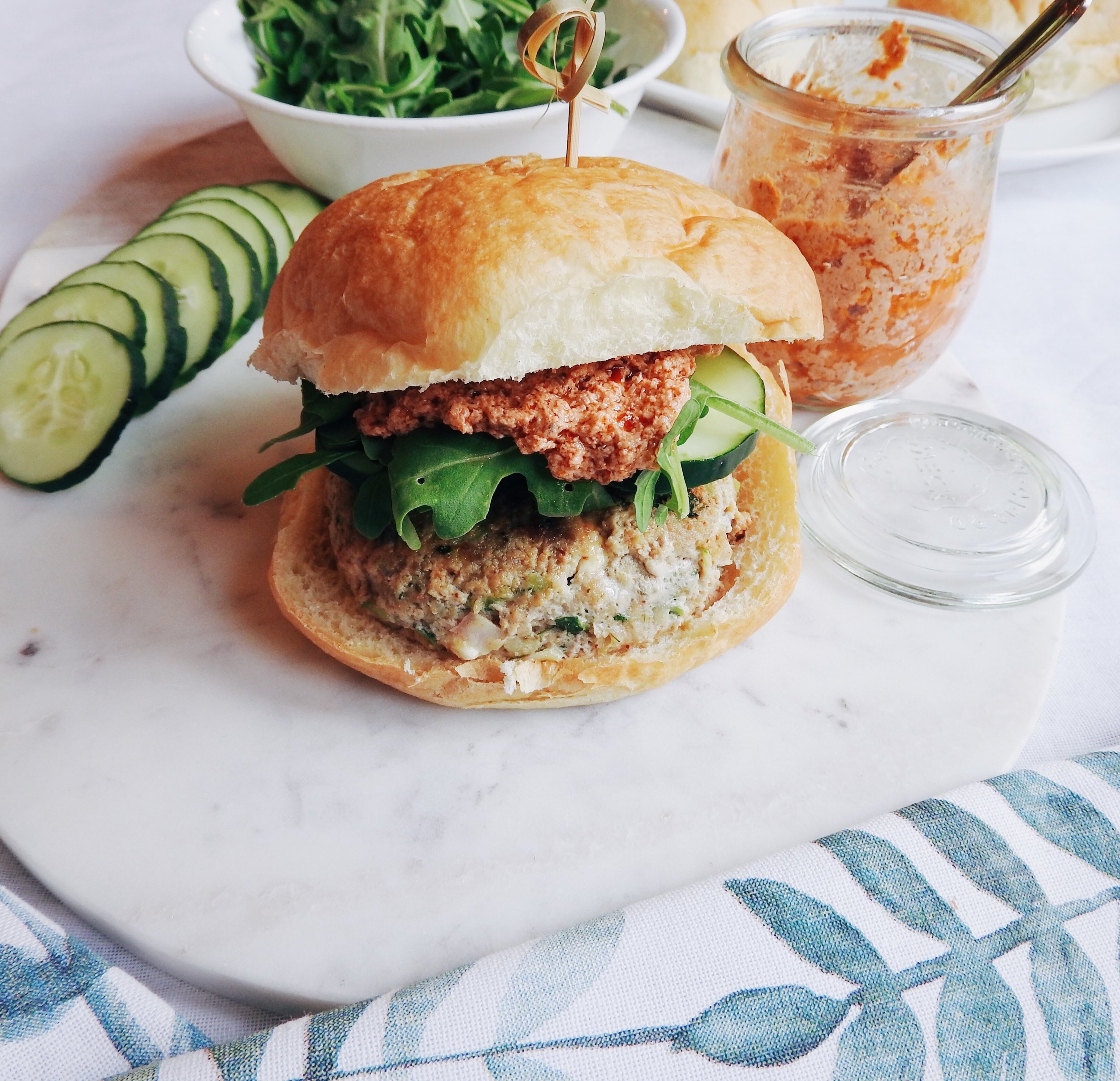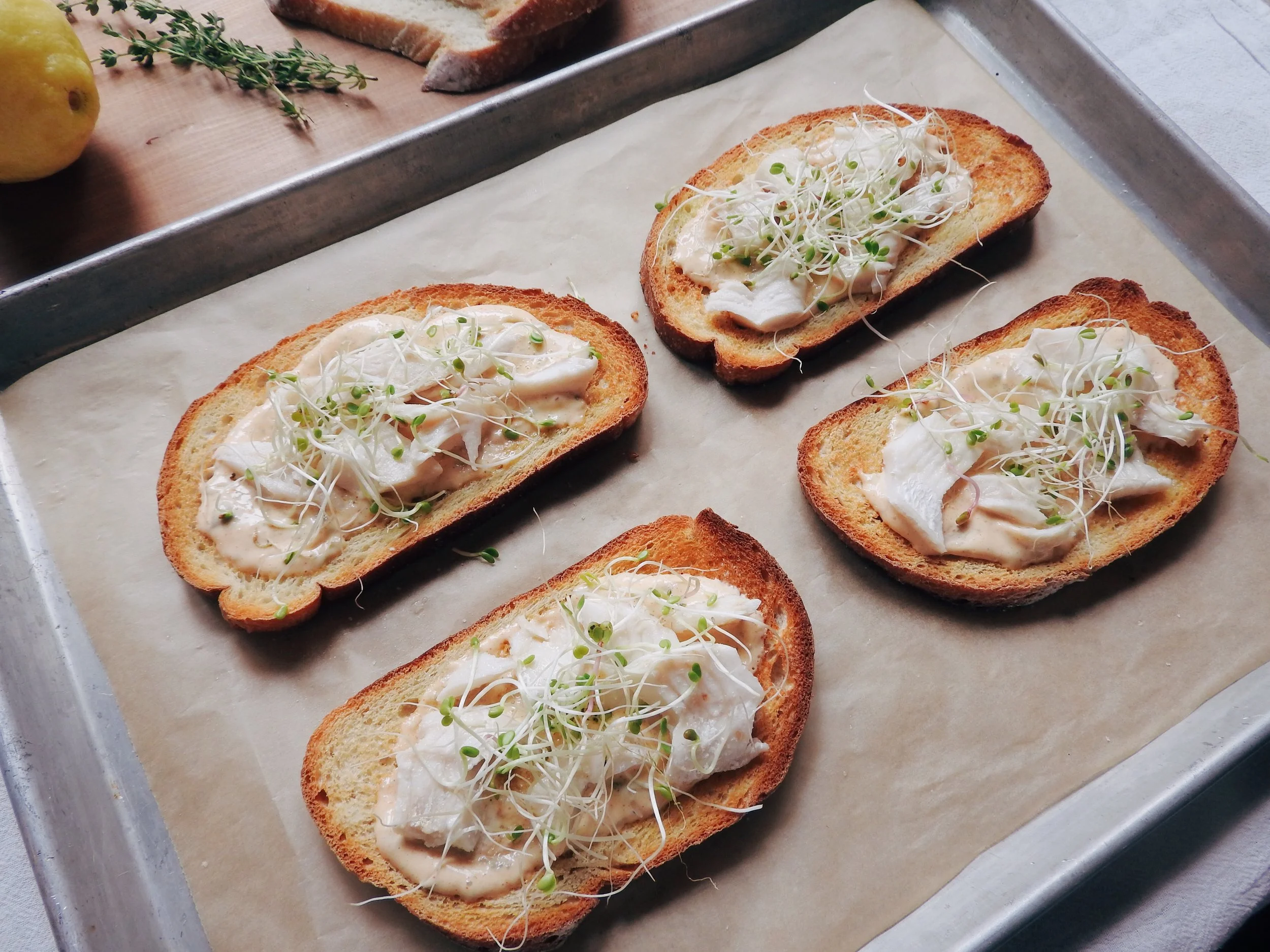Charcuterie Boards 101
Charcuterie Boards are gaining popularity in the restaurant scene all over the U.S. The word "charcuterie" originally derives from France, and describes all types of cured meats. American restaurants have reinvented this concept by incorporating additional ingredients to create a variety of tastes and textures. The simplicity and beauty of a Charcuterie Board may intrigue you to build your own. In this post, I will share with you my tips on how to organize a board and what components to consider.
Before you get started, first decide on the shape of your board: rectangular, square, or circular. Next, figure out if you want your board to be symmetrical or asymmetrical. Both are appealing, so choose accordingly. Since charcuterie is the star of the platter, I suggest you start with this component. I like to include at least two kinds of meat with cheese pairings. On my board, I used prosciutto paired with a goat's milk Manchego and black pepper salami paired with an applewood smoked cheddar.
In addition to the aforementioned ingredients, I recommend featuring briny elements, such as mixed olives and cornichons. These two items add a nice variation in color and provide a complex texture. Next, you'll want to add crackers and/or nuts for a satisfying crunch.
Now you are ready for the final touches. Add some jam or fruit for a burst of sweetness, and a few sprigs of rosemary or thyme for a vibrant garnish. To balance the flavors even more, enjoy with a glass of red wine to cut the fat from the assortment of meats & cheeses.
Although they may seem daunting, Charcuterie Boards are actually an easy way to assemble a variety of flavors, textures, and colors. With the right combination of ingredients, anyone can create a unique Charcuterie Board that impresses guests and leaves them craving more!










